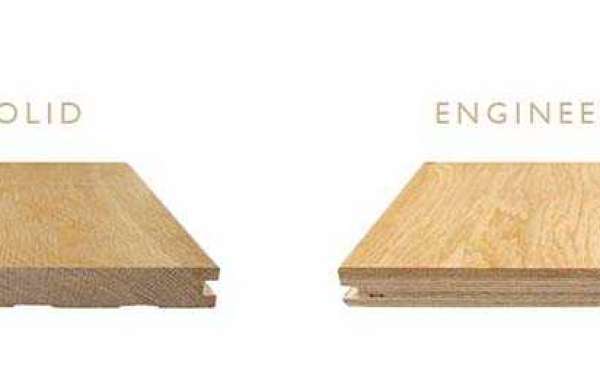Engineered wood solid wood Flooring are two popular choices for homeowners looking to install hardwood floors in their homes. Both options have their own advantages and considerations, and understanding their differences can help you make an informed decision for your specific needs.
Solid Wood Flooring: Solid wood flooring is made entirely from a single piece of hardwood. It is typically available in various species, such as oak, maple, cherry, or walnut, and comes in different thicknesses and widths. Solid wood planks are milled from solid lumber and are usually 3/4 inches thick.
Engineered Wood Flooring: Engineered wood flooring is constructed with multiple layers. The top layer is a real hardwood veneer, while the core layers are made of plywood, high-density fiberboard (HDF), or other wood composites. Engineered wood is typically available in similar wood species as solid wood flooring but comes in thinner profiles.
Stability and Moisture Resistance:
Solid Wood Flooring: Solid wood can be more susceptible to changes in humidity and moisture. It can expand or contract based on the environment, which may lead to warping or gaps between the boards.
Engineered Wood Flooring: Engineered wood is more dimensionally stable due to its layered construction. The cross-layered design helps minimize the effects of moisture and humidity, making it a better option for areas prone to fluctuations in environmental conditions, such as basements or regions with varying climates.
Installation:
Solid Wood Flooring: Solid wood is typically nailed or stapled down to a wooden subfloor, and it may not be suitable for installation directly over concrete or in below-grade spaces.
Engineered Wood Flooring: Engineered wood flooring offers more installation options. It can be glued, stapled, or floated (installed without nails or adhesive) over various subfloors, including concrete, making it more versatile for different spaces.
Refinishing:
Solid Wood Flooring: One of the significant advantages of solid wood is that it can be sanded and refinished multiple times, which allows you to refresh its appearance and remove surface scratches and wear.
Engineered Wood Flooring: The thickness of the top hardwood layer in engineered wood determines how many times it can be refinished. Thicker veneers may allow for one or two refinishing sessions, while thinner veneers may not be refinished at all.
Solid Wood Flooring: Solid wood tends to be more expensive than engineered wood due to its premium nature and the availability of thicker planks.
Engineered Wood Flooring: Engineered wood is generally more budget-friendly, making it a popular choice for homeowners seeking the look of hardwood without the higher price tag.
In summary, solid wood flooring offers the classic appeal and the potential for multiple refinishing sessions, while engineered wood flooring provides enhanced stability, more installation options, and a more affordable alternative. Your choice between the two will
Read Some More Inetresting Articles
Contact us : latestbulletins@gmail.com










